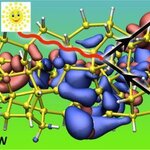Chemistry

Bisphenol A (BPA) in high quantity can harm people, just like almost anything. BPA has been labeled a concern by some because of its ability to be an endocrine disruptor that hijacks the normal responses of hormones.
While toxicology studies have shown that only very high doses of this chemical affect exposed animals — doses as high as 50 mg/kg/day - by focusing on numerous endpoints a new review says it can find effects not detected in peer-reviewed toxicology studies. The authors of a new paper conclude that endocrine disruptors need to be studied at much lower doses.
To revise the…

In Part 2 of Science Play and Research Kit: Business Models, Packaging, and Marketing, we’ll discuss the Gillette Razor model. I’m sure you’ve heard of it: give the razor away and sell the blades. It would seem that this model is more myth than reality. There isn’t much in a science kit that you can actually patent and if you’ve bought in to open design from SPARK Part 1 patents would be an anathema to open design and science outreach. The most difficult part is going to be how much your kit will cost.
Google “chemistry set” to find the cost of existing chemistry sets. Once you know how much…
Click here and sign up to be a participant on ABC’s Shark Tank. You’re probably thinking “what does appearing on a TV show have to do with The Science Play and Research Kit?” Let’s put things into perspective: you’ve designed the perfect science kit, you’ve won the $50,000 prize…then what? If you’re not thinking right now about how to build a sustainable business around your kit, then you’ve probably failed before you began. We’ll take a look at a few business models you may wish to consider. Part 1 of “Science Play and Research Kit: Business Models, Packaging, and Marketing” discusses Open…

In my previous article, I posted the press release for the Science Play and Research kit. There are 76 days left in the competition. I can only produce one article per week due to my work schedule thus I’d only be able to come up with a chemistry set with 11 experiments. It wouldn't be much of a chemistry set would it? So, I’ve decided not to actually enter the competition but instead to post ideas for the set so whoever wants to use them can incorporate them into their design for SPARK.
According to the FAQ page:
Does the entry need to be based on the science of chemistry?
No, it…

Dear Science 2.0 writers:
Do any of you want to collaborate on developing a Science, Play and Research Kit (SPARK)? Here's the press release:
October 15, 2013 (Palo Alto, Calif.) – The Gordon and Betty Moore Foundation, in collaboration with Society for Science&the Public (SSP) today announced the launch of a new competition focused on creating the equivalent of the chemistry set for the 21st Century. The Science, Play and Research Kit (SPARK) Competition challenges participants to generate a new set of experiences and activities that encourage imagination and interest in…

Polymers are found in countless commercial, medical, and industrial products and the porous kind are known as foam polymers.
Foam polymers are useful because they combine light weight with rigid mechanical properties and a group has developed a process to grow highly customizable coatings of foam-like polymers. Foam polymers are used in a variety of ways, including the delivery of drugs in the body, as a framework for body tissues and implants, and as layers in laser targets for fusion research.
The technology is a system in which a mixture of gases is pumped into a low pressure…

The Nobel Prize in Chemistry 2013 was awarded jointly to Martin Karplus, Michael Levitt and Arieh Warshel "for the development of multiscale models for complex chemical systems".
While today, chemical modeling is carried out in computers, in the early 1970s that was far more difficult. Chemical reactions occur at lightning speed. In a fraction of a millisecond, electrons jump from one atomic nucleus to the other. Classical chemistry has a hard time keeping up; it is virtually impossible to experimentally map every little step in a chemical process using physical models.
The researchers laid…

We're better off if chemicals we use in everyday life are created from renewable resources using biotechnology - currently many of those chemicals are instead derived from fossil resources.
Phenol, a starting material for the production of numerous industrial chemicals and polymers, including bisphenol A and phenolic resins, is an important commodity chemical, and its production depends entirely on the chemical synthesis from benzene, and its annual production exceeds 8 million tons worldwide.
Microbial production of phenol would seem to be a non-viable process considering the high…

Are you on Team Quantum Dots or Team Nanowires when the topic of future nanoscale energy-harvesting technology in solar panels comes up?
A trio of researchers used computational chemistry models to predict the electronic and optical properties of three types of nanoscale (billionth of a meter) silicon structures with a potential application for solar energy collection: a quantum dot, one-dimensional chains of quantum dots and a nanowire.
The ability to absorb light is substantially enhanced in nanomaterials compared to those used in conventional semiconductors. Determining which form…

The quest for evidence of life on Mars could be more complicated than previously thought due to perchlorate,, a salt comprised of chlorine and oxygen, that interferes with the techniques used by the Curiosity rover to test for traces of life. The chemical causes the evidence to burn away during the tests.
Curiosity is checking Martian soil and rocks for molecules known as organic carbon compounds that are the hallmark of living organisms on Earth but while trekking around the Rocknest sand dune in November 2012, the rover found evidence of perchlorate. When Curiosity heats a scoop of…